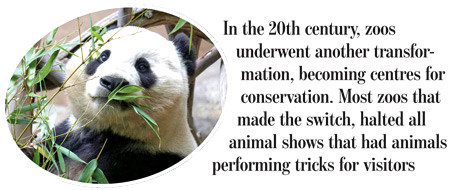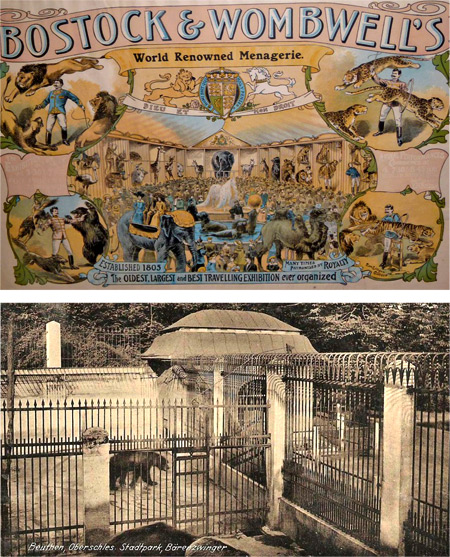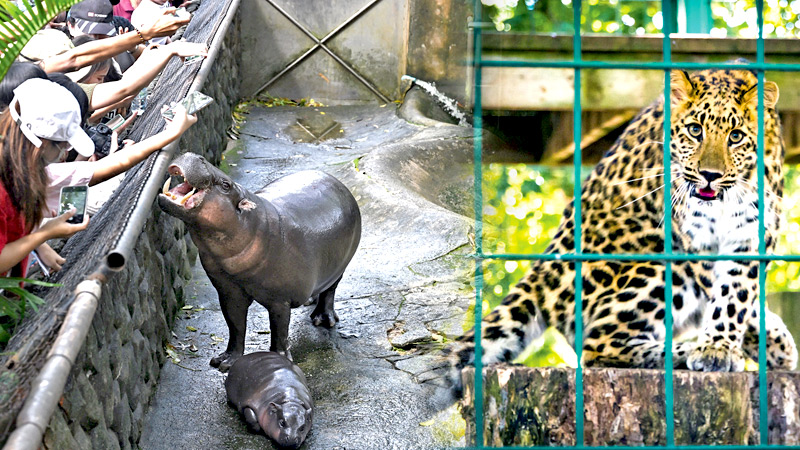Zoological gardens, or zoos as they are colloquially called, are facilities that keep animals in captivity, generally for exhibition or conservation purposes.
 The history of animal menageries stretches back thousands of years, evolving from private collections of royalty and aristocrats to modern, scientifically managed centres for wildlife preservation. Zoos have long been the subject of ethical debate, especially regarding the treatment and exploitation of animals. While many zoos claim to serve educational, scientific, and conservation purposes, critics have pointed out how zoos have historically prioritised entertainment and profit at the expense of animal welfare.
The history of animal menageries stretches back thousands of years, evolving from private collections of royalty and aristocrats to modern, scientifically managed centres for wildlife preservation. Zoos have long been the subject of ethical debate, especially regarding the treatment and exploitation of animals. While many zoos claim to serve educational, scientific, and conservation purposes, critics have pointed out how zoos have historically prioritised entertainment and profit at the expense of animal welfare.
In the past, menageries were mostly kept by rulers and the elites, keeping collections of rare, exotic wild animals as a display of wealth, power, and prestige. Though the term originated in 17th century France, Menageries were a common practice among nobility throughout history in different civilisations around the world. The first recorded instance of an organised collection of animals in Egypt around 2500 BCE, where pharaohs kept animals from Africa and Asia such as elephants, baboons, and wildcats in menageries.
Brutal exhibitions
 Similarly, ancient Chinese emperors built massive imperial conservatories open to the public as early as 1000 BC. The ancient Greeks and Romans also had a fascination with wild animals, with many Greek states having zoos, and Alexander the Great was known to send back many exotic animals he encountered during his conquests in Asia. Ancient Rome is famous today for their brutal exhibitions in stadiums for public entertainment, where hundreds of wild animals daily would be hunted, or forced to fight to death.
Similarly, ancient Chinese emperors built massive imperial conservatories open to the public as early as 1000 BC. The ancient Greeks and Romans also had a fascination with wild animals, with many Greek states having zoos, and Alexander the Great was known to send back many exotic animals he encountered during his conquests in Asia. Ancient Rome is famous today for their brutal exhibitions in stadiums for public entertainment, where hundreds of wild animals daily would be hunted, or forced to fight to death.
During the Middle Ages, the practice of keeping animals as symbols of status continued in European courts, most notably in the Tower of London menagerie, established in the 13th century by King John of England. Kings and nobles would commonly receive exotic animals as diplomatic gifts, such as lions from African rulers or polar bears from the Arctic, which were then kept in confined spaces and exhibited to the public on occasion.
The modern idea of what we consider to be a zoological garden — an institution with a focus on education, science, and conservation — only first began to take shape in the 18th and 19th centuries. One of the first true zoos in this sense is the Ménagerie du Jardin des Plantes in Paris, which opened in 1793 during the French Revolution and is currently open today as the second oldest zoo in the world, behind Germany’s Schönbrunn Zoo.
Transformation
Unlike earlier menageries, this zoo was open to the public and had more of a focus on scientific study and education. However, as the practice grew in popularity and more zoos propped up, profit and entertainment were clearly the main motivators for most if not all zoos.
In the 20th century, zoos underwent another transformation, becoming centres for conservation. Most zoos that made the switch, halted all animal shows that had animals performing tricks for visitors, acknowledging the abuse the animals were forced to endure.
Around the ’70s, with increasing awareness of environmental issues and species extinction, zoos took on a more active role in protecting endangered species. Breeding programs, such as those for the giant panda, became critical tools in the global conservation movement, hoping to breed them in captivity and reintroduce them into the wild.
The public’s expectations have also changed. Zoos were largely no longer seen as places for entertainment alone; they became institutions where people could learn about wildlife and the importance of biodiversity.
Some critics have staunchly remained skeptical, citing animal exhibits for profit as exploiting animals, regardless of the intentions. In some cases, these concerns are more than well-founded, as certain institutions don’t benefit the animals in their captivity in any way and only exist for public entertainment.




